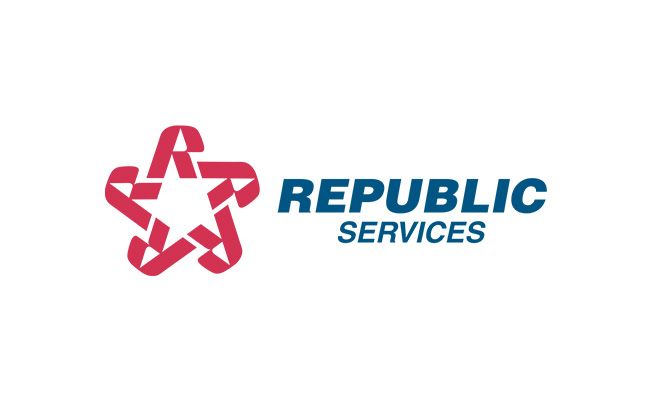CUSTOMER PROFILE
ABOUT
With a population of nearly one million, Fort Worth is the 12thlargest city in the United States and one of the five fastest-growing cities in the nation. In 2020, the Fort Worth City Call Center was recognized for its outstanding use of technology in the call center, earning CS Week’s Award of Excellence. The call center was able to maintain key metrics, such as a 20-second average speed to answer and an 87.5% service level. Quality and customer satisfaction remained a top priority for the call center in 2022, with consistent scores of 95% and 4.81 out of 5.0, respectively.
GOALS
- Integrate NICE Workforce Management with PeopleSoft ERP
- Improve time management
- Enhance agent efficiency and productivity
- Streamline payroll processing
FEATURES
- Bidirectional link between scheduling and payroll
- Objective: transparent access to time-off requests
- Faster and smoother schedule processing for agents and supervisors
- NICE SmartSync
The City of Fort Worth operates a contact center that supports a range of services for citizens and businesses. To keep pace with the city’s rapid, sustained growth, the City is always looking for ways to improve operations. Working with NICE Value Realization Services (VRS) the City integrated its workforce management and payroll, saving substantial agent and supervisory time while improving the scheduling process, particularly around bilingual access and policy transparency.
01 THE BEFORE
A time-consuming disconnect
The City of Fort Worth Call Center takes primary responsibility for a wide variety of both resident and business contacts, including animal control, code compliance, solid waste, inquiries to the Mayor’s Office, street light reports, and overflow non-emergency fire and police calls. Sixteen agents handle 300,000 contacts annually across voice, chat, and email channels.
Fort Worth has used NICE Workforce Management to schedule agents since 2016, but the solution was never fully linked with the PeopleSoft ERP system used to process payroll and track agent time-off. This required agents to manually log in to PeopleSoft to enter time worked and to request time off.
This disconnect also meant that many time-off requests were communicated manually in email from agents to supervisors, which inevitably led to mistakes and misperceptions. “Sometimes things got lost in the shuffle. Sometimes days weren’t available, or we had to deny requests because someone else had requested time off,” said Katherine Cabello, City of Fort Worth customer service supervisor. “So sometimes there was a little resentment or the feeling that we were playing favorites, when all we could do was work from the timestamp on an email.”
02 DESIRE TO CHANGE
A culture of improvement
Contact center leadership promotes a culture of continuous evaluation and improvement, with the joint goals of boosting performance and efficiency and ultimately elevating the caller experience. During a process review, the long-standing disconnect between NICE Workforce Management and payroll became a high-priority target. The contact center had previously attempted to automate time-off management with such a link, but the project was shelved.
In spring 2022, the effort began anew. Leadership wanted to save time for all employees with a stable, reliable connection between the key systems. Shift bidding was also targeted for improvement. To serve its diverse population, some of the contact center’s agents are bilingual, and to ensure sufficient coverage by bilingual agents, those agents had priority in shift bidding. Leadership wanted a more granular approach to shift bid priority while still guaranteeing proper coverage of all intervals by bilingual agents.
03 THE SOLUTION
A collaborative effort with NICE
Following past success with NICE Value Realization Services (VRS), the City of Fort Worth reengaged with VRS to automate these previously manual processes and ensure enduring success. VRS utilized NICE SmartSync to establish a link between NICE Workforce Management and PeopleSoft ERP. Keeping time-off balances and true timeworked data in lockstep between the systems and streamlining the scheduling and payroll processes for the call center and related departments.
Today, agents have a reliable, up-to-the-minute view of all time-off opportunities available to them, including access to all time-off categories allocated by the payroll system (vacation, holiday, personal, etc.) Agents can select from these buckets of time-off when making their requests. Shift bidding is now ranked on multiple criteria defined by supervisors, using bilingual skill as just one of several bid priority criteria.
Because the NICE interface is already familiar and intuitive for agents, the rollout was simple and required just 30 minutes of agent training to introduce new processes. NICE VRS worked closely with the City of Fort Worth call center’s leadership team to ensure smooth adoption and the communication of best practices to manage the integration in the months and years ahead.
04 THE RESULTS
Lasting improvements in process and experience
The integration between NICE Workforce Management and PeopleSoft ERP delivers time savings, error reduction, and improved satisfaction throughout the ecosystem.
Completely eliminating the need to manually enter time in PeopleSoft saves everyone time. Each agent spent as much as one hour per pay period on time entry, time-off, and schedule bidding. The new SmartSync integration eliminates these manual processes, saving an estimated 416 agent hours per year. Supervisor time needed to process agent schedules is down an estimated 67-75%, and the call center timekeeper’s workload for call center agents is also down over 50%. In all, the City estimates saving at least 520 hours per year using SmartSync.
Call center leadership now has full visibility into agent breaks, lunches, and other off-hook windows, givingvisibility into schedule adherence which could previously only be guessed at or inferred from selfreported data. Supervisors can now speak with agents about any significant deviations from schedule. Forecast accuracy is also improved now that past data is more precise. The resulting corrections and enhancements have boosted schedule adherence in the call center to 96%. Caller satisfaction has also climbed to a sustained score of 4.8 out of 5.
Employees are also signaling greater satisfaction. Thanks to increased transparency and a much simpler path to manage time-off requests as well as regular pay cycle activity, employee satisfaction climbed 90% after the integration. Bilingual agents are now scheduled more efficiently without the need to give them blanket bid priority. Supervisors can be mindful of avoiding overlapping breaks and lunches to provide consistent coverage. Service for callers to the Mayor’s Office has been similarly reinforced by ensuring the agreed-upon minimum agents work that queue during all intervals.
With new insight into how much time and effort was previously spent on the processes, the call center is continuing to improve productivity and efficiency. Freeing up agent time spent in the payroll system has led to more windows for developmental and training programs.
05 THE FUTURE
Ready for new responsibilities
With sustained growth in the Fort Worth metro, all city services are expected to stay efficient and be ready to meet future needs. Leadership believes that with higher efficiency, the call center will be better able to serve more city departments on both a temporary and permanent basis as the need arises.







